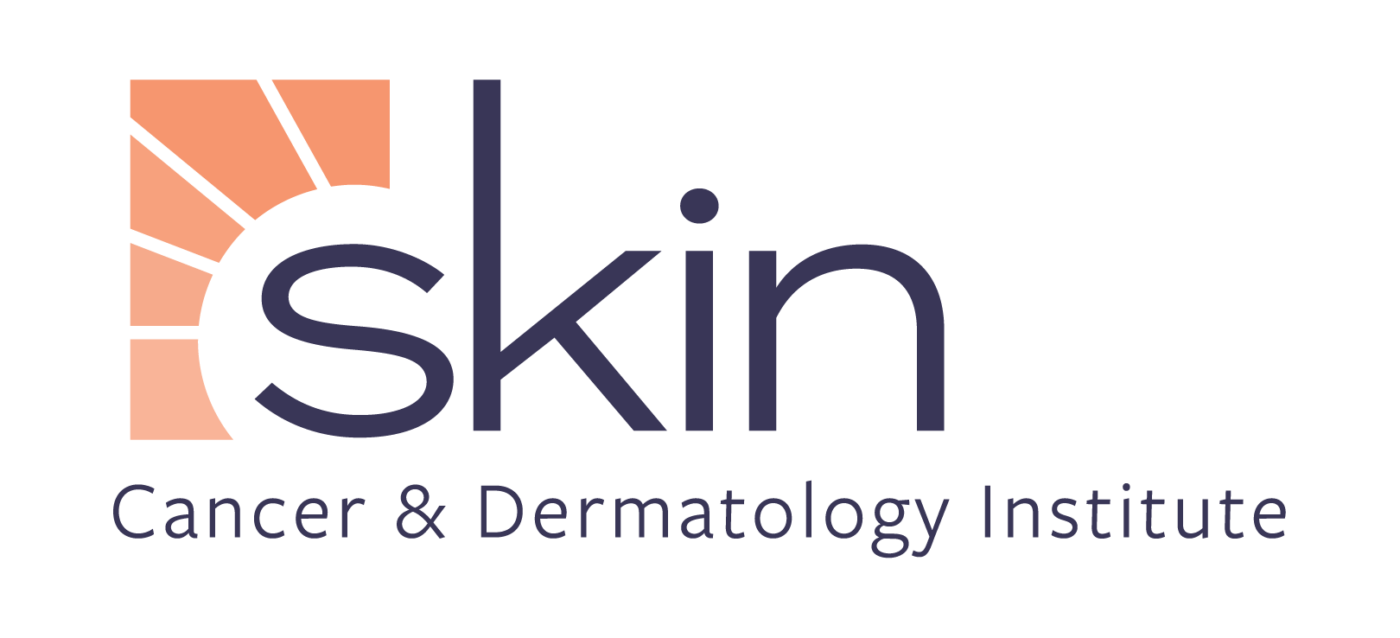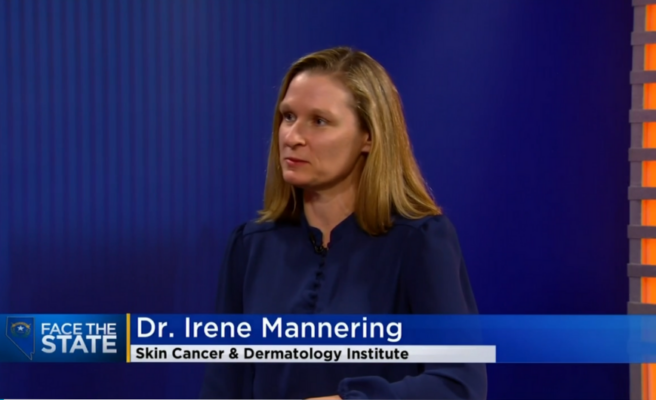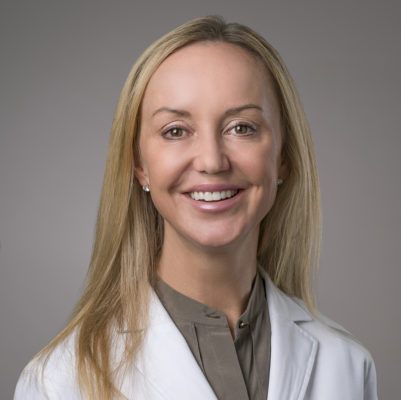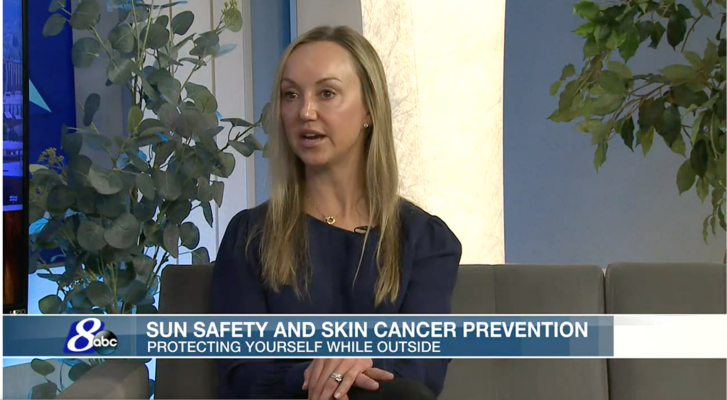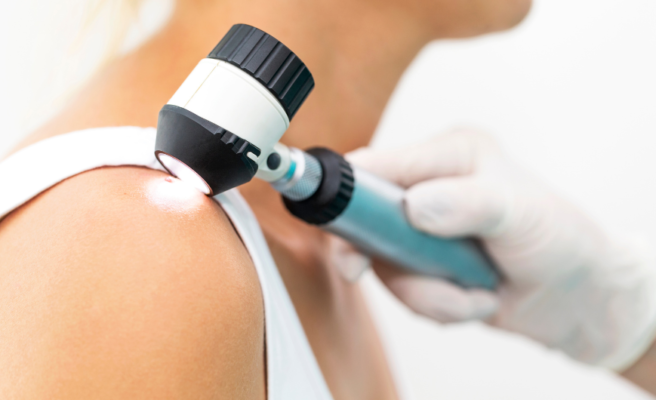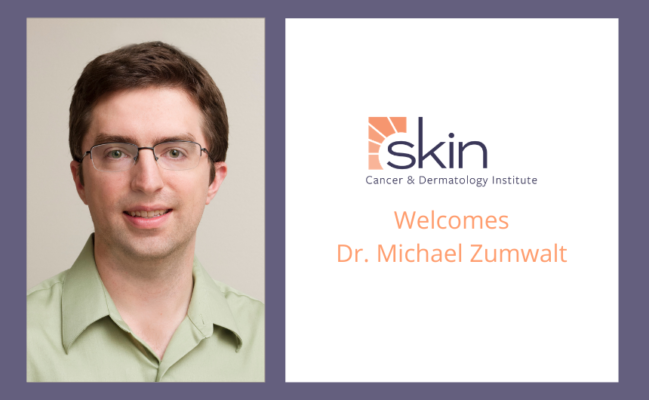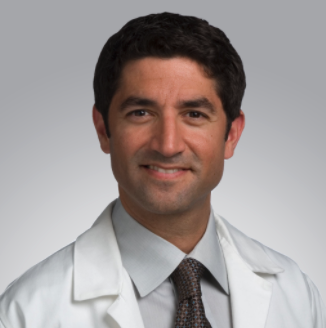SKIN CANCER & MOHS SURGERY
Home »
Skin Cancer & Dermatology Institute offers Mohs surgery for skin cancer at its Greater Reno-Tahoe area locations, featuring Fellowship-Trained Mohs Surgeons Dr. Whitney Hovenic, Dr. Kevin Kiene, Dr. Jonathan Staidle, and Dr. Michael Zumwalt.
What is Mohs Surgery?
Mohs micrographic surgery is a specialized procedure for the microscopically controlled removal of skin cancers. It’s the single most effective technique for removing basal and squamous cell carcinomas with a cure rate of up to 99%.
Mohs surgeons microscopically examine the tissue being removed during the surgery, which eliminates the need to estimate how much to cut and how deep the tumor’s roots go. Thus, Mohs surgery can remove all of the cancerous cells while keeping as much healthy tissue as possible. Because it results in minimal scarring, it is also ideal for highly visible skin cancer on the head and neck.
The layer-by-layer removal and identification process allows our Mohs surgeons to more effectively remove cancerous skin tissues. Mohs surgery is a form of treatment developed in the 1930s by Dr. Frederic Mohs which combines the surgical removal of cancerous tissues along with the immediate microscopic examination of the tumor and underlying roots.
Mohs Skin Cancer Surgery in Seven Steps
Learn More
STEP 1: The cancer is first curetted by the Mohs surgeon to get a feel for how deep and wide it extends. A scalpel is then used to excise a 1-2mm margin around the curetted tumor. Hash marks are made at 12 o’clock, 3 o’clock, and 6 o’clock to maintain orientation of the skin. Care is taken to cut a 45-degree angle around the skin edges.
Learn More
STEP 2: Colored ink is used to maintain orientation of the skin (green is from 9 to 12 o’clock, red is from 12 to 3 o’clock).
Learn More
STEP 3: An anatomical map is drawn to display the location and orientation of the excised skin. The map includes hash marks and symbols to notate the color of ink used (green = dashes, red = solid line).
Learn More
STEP 4: Our histotechs prepare the tissue by turning it into a frozen block and then slicing the block into very thin layers. These layers are then placed onto glass slides.
Learn More
STEP 5: The glass slides are then stained so that the tissue is more visible under the microscope.
Learn More
STEP 6: The Mohs surgeon reviews the slides under a microscope to see if any skin cancer cells extend to deep or peripheral edges of the tissue. In this case, the margins are clear, meaning there are no cancer cells extending to any of the edges.
Learn More
STEP 7: We celebrate when then the tissue margins are clear!
What to Expect with Mohs Surgery
Mohs surgery is performed in the office with local anesthesia. It is recommended that only a Mohs Fellowship-Trained Doctor with the highest standards of quality and competency performs the surgery.
Preparing for Your Surgery
You will need to be off for the entire day of your surgery, as we cannot predict how long you will be with us on that day.
- What to Bring: Please bring a book or a tablet (iPad, etc.) to help pass the time. We have Wi-Fi available. Wear comfortable clothes that can be easily removed without going over your head such as a button-down shirt. We will provide light snacks throughout the day.
- Medications: Only stop your medications if instructed by your primary care doctor or cardiologist. If you take aspirin for prevention and have NO history of heart attack or stroke, please stop your aspirin ten days before surgery. If you take ibuprofen or naproxen, please limit your use for two weeks prior to surgery. Please stop the following oral supplements one week prior to surgery: fish oil, garlic supplements, ginkgo, and vitamin E.
If you have been told by your doctor to take antibiotics before procedures and you have a history of artificial implants, heart valves, heart murmurs, or other conditions, please call our office prior to surgery so we can help you plan accordingly.
- Day of Surgery: Please eat breakfast and take your regular medications. You will be awake for the procedure so it is not necessary to fast.
Your Mohs Surgery
Mohs has a superior cure rate for skin cancer and is often performed after prior treatment has failed. However, it is important to know that no method at any time can promise 100% cure rates, including Mohs treatment.
It enables the surgeon to remove the minimum necessary amount of normal skin needed for a high cure rate (95 to 99%), which is especially important in critical and sensitive areas. Once a tumor has come back, conventional treatments such as cutting, scraping and burning, and radiation only offer approximately a 50% cure rate. Though it can be a time-consuming process, Mohs surgery is worth the effort in order to get all cancer out while retaining as much healthy tissue as possible. The process our Skin Cancer & Dermatology Institute Fellowship-Trained Mohs surgeons use during the procedure includes:
- Your skin cancer and the surrounding skin will be numbed with a local anesthetic.
- The Doctor will remove the visible portion of your skin cancer and draw a map of the removed cancer to be used to guide the precise location of any remaining cancer cells.
- Your wound will then be bandaged and your skin cancer will be taken to our on-site laboratory. The laboratory portion takes 45 minutes to one hour.
- During this time, the Doctor reviews things to determine if there are any cancerous cells remaining.
- The location of any remaining cancerous cells is traced on the map so that only areas with remaining skin cancer undergo further surgery.
The Mohs surgery removal process continues until there is no longer any evidence of skin cancer. The wound is then repaired using advanced reconstruction techniques. In some cases, we may coordinate with a specialist in eye or ear reconstruction to do your repair.
What Types of Skin Cancer Does Mohs Surgery Treat?
Most commonly Mohs surgery is used to treat basal cell carcinoma and squamous cell carcinomas. Skin cancers may destroy the skin and structures where they grow and might be fatal if left untreated. However, skin cancers treated with Mohs surgery usually do not spread to other parts of the body.
Skin cancer will not go away on its own and while it may seem to heal over time, if untreated, they always come back bigger, and with deeper roots. While the removal of skin cancer is not an emergency, it should be removed within a month or two of diagnosis. Read more about skin cancer here.
Does My Insurance Pay for Mohs Surgery?
In most cases, your medical insurance will cover Mohs surgery though you will be responsible for any deductible and copayment required by your policy. We like to arrange for your insurance company to reimburse us directly if possible. If paying for your Mohs surgery is a hardship, please let our Skin Cancer & Dermatology Institute team know, and we will work out an alternative payment plan.
Additionally, if you are a Medicare enrollee, you should mention any special supplemental policies to our team when you visit one of our offices. It’s also a good idea to bring all health insurance cards and policy numbers with you when you come in for your appointment. Find out more about insurance information here.
What to Expect After Your Surgery
If you do any physical labor at your job, please plan to take off the two days after surgery. We ask that you take it easy for at least 48 hours after surgery to minimize complications such as bleeding or problems with your stitches. We can provide a work note during your visit.
Usually, you will be seen the following week to get your stitches out unless you live far away and we will coordinate having your stitches out closer to home. Often times there is a second visit a month after surgery to check on your healing. Additional visits may be needed and will be made based on your individual needs.
Scarring
Removal of cancer will always result in a scar. Mohs surgery is used to remove your skin cancer in a tissue-sparing manner and our doctors are experts in reconstructive surgery and every effort will be made to make your scar as natural as possible.
